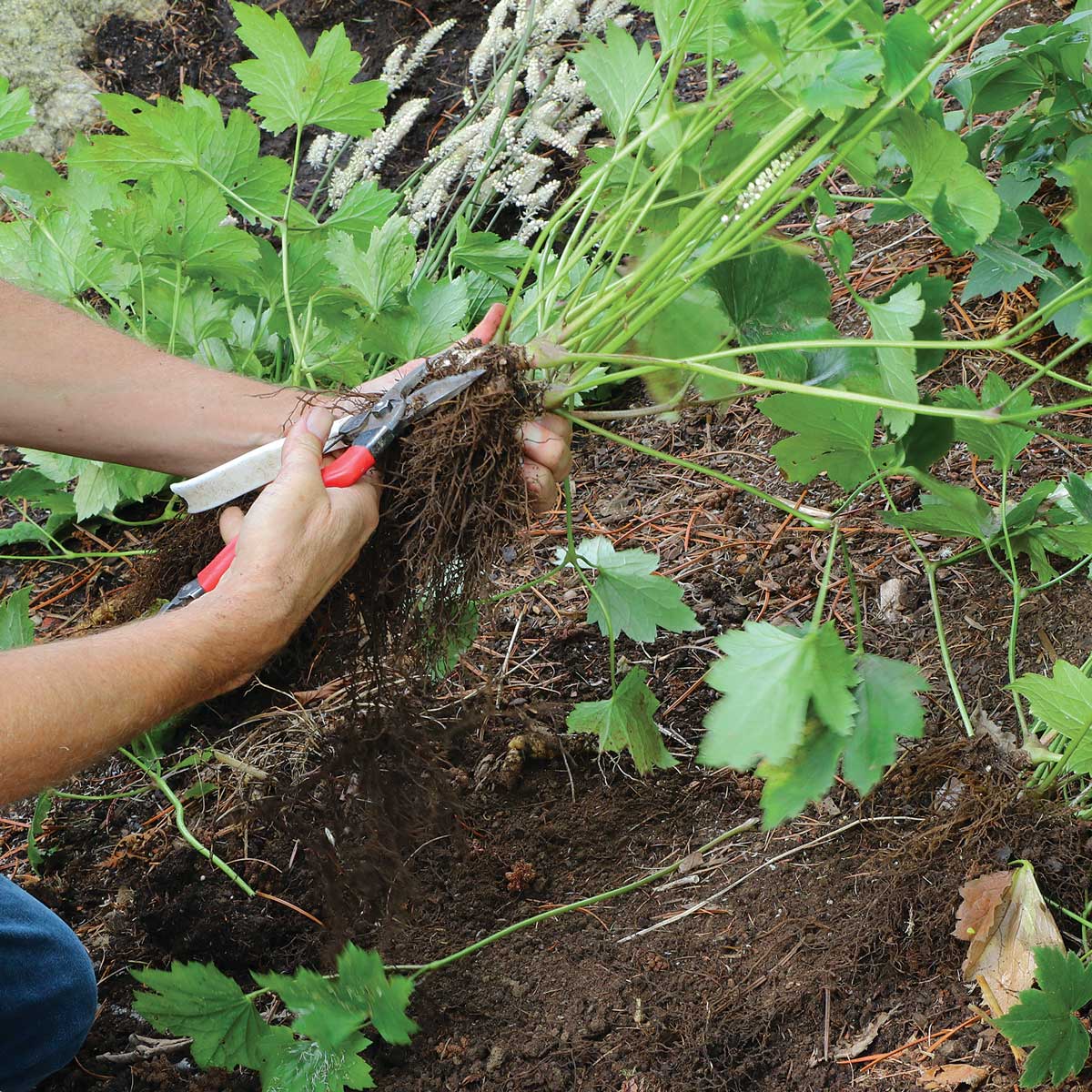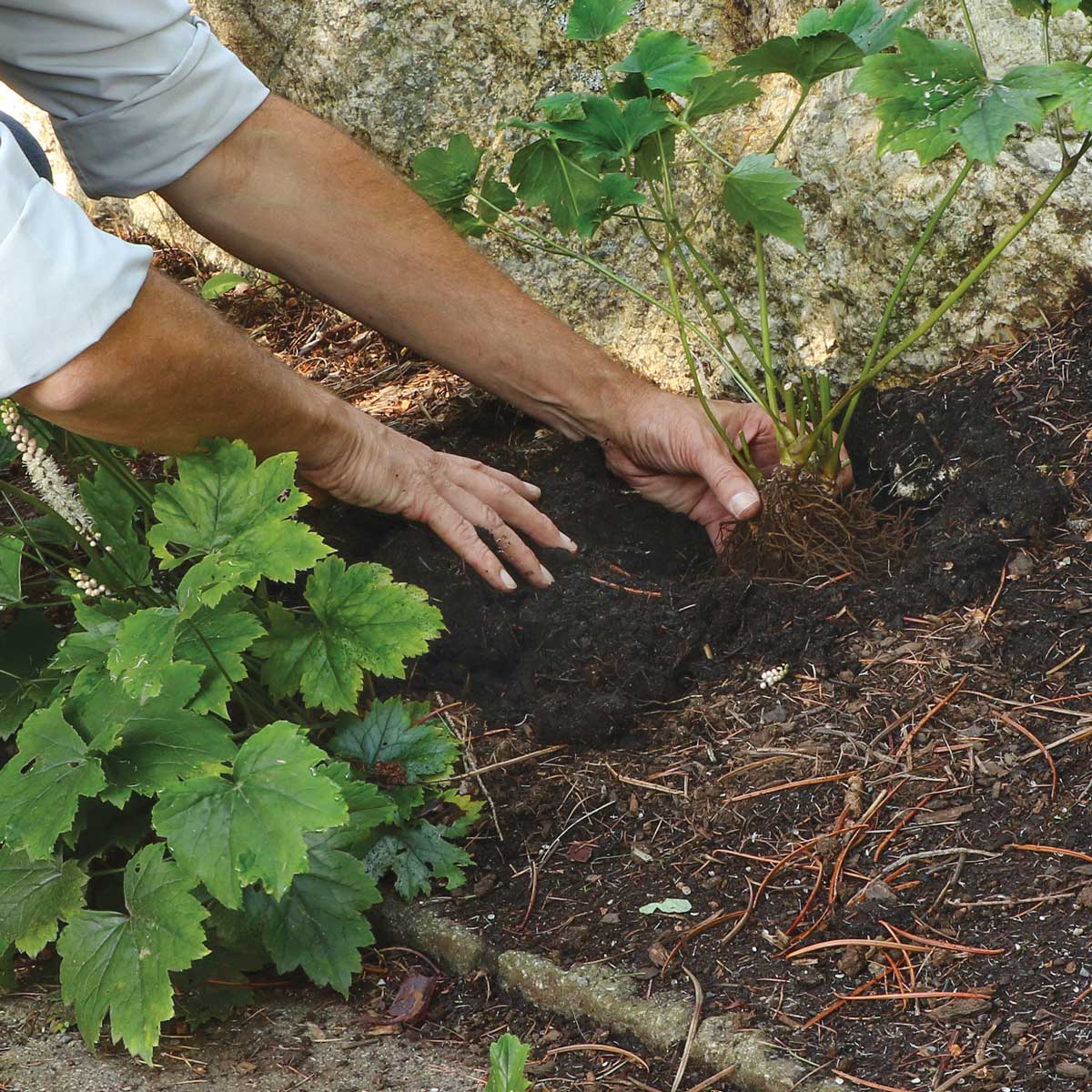Dividing Perennials Step-by-Step
Follow this guide to make the right cuts and to help your plants establish by winter
Dividing perennials is one of the easiest and cheapest ways to get more plants. Many perennials can be divided, but how and when should you do it? Here are three of the main questions people ask when exploring how to divide perennials.
Three Questions About Dividing Perennials
What does it mean to divide perennials?
Dividing puts a lot of strain on a perennial; by being uprooted and cut into pieces, a plant loses part of its root system. A freshly divided plant needs to conserve water and put energy into creating new roots. If there is already substantial growth on the plant, the root system may be spread too thin to be divided. Trying to maintain a mass of foliage and then being asked to establish new roots might be too much for the plant. If there are a lot of leaves, the plant may also be losing water faster to transpiration than it can replenish with a smaller root system. For these reasons, dividing a perennial in summer when the weather is hot and sunny and the plant already has a lot of growth is a bad idea.
When is the best time to divide perennials?
Spring is the best time to divide a perennial because there is less growth on the plant than later in the growing season and the weather is mild. To ease the stress on the plant, try to time your division to coincide with a stretch of cloudy, rainy weather, and be diligent about watering for several weeks after division. You can also divide perennials in fall (pictured), but you should cut back some of the foliage and any flower stalks to help it conserve energy and water. Don’t divide in late fall, because plants may not have enough time to establish themselves by winter. Perennials that have been divided too late in the season may also be susceptible to frost heaving over winter.

How do you divide perennials?
Using a spade or fork, lift the perennial from the ground and shake off some of the soil. This will help you see natural places to split the plant. Make sure each division will have two to three strong growing points and a decent root system before you divide; if these conditions are met, you can divide the plant into as many pieces as you want. Be sure to sterilize whatever tool you use to cut the roots prior to dividing, as well as between different plants, to reduce the chance of spreading disease.

Learn more
9 Extraordinary Fall Blooming Perennials for the Autumnal Garden
Understand the science behind division
The Ultimate Guide to Dividing Plants
Diana Koehm is the assistant editor.
Photos: Diana Koehm






Comments
Log in or create an account to post a comment.
Sign up Log in